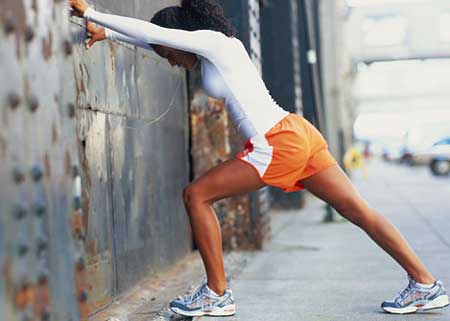Many runners stretch before and after a workout or a competition. Often they do static stretching, i.e. they strech a muscle by elongating it, in a static posture for 15-30s or more. The idea is that if we stretch a muscle before and after an effort, it will gain power, elasticity, and it will decrease the chances of being injured.
However, you have to admit that the idea lacks of intuitivity: if you extend a rubber band to its maximum capacity and hold it that way for a long time and repeatedly, then when you relax the tension, at some point, you'll notice that it has lost its capacities, that it has become too loose.
Researchers interested in the biomechanics of sport and physical activities tried to show if static stretching had any benefits. What they found out, when results weren't completely negative (I mean not corroborating the hypothesis that static stretching shows an identified benefit), is that things aren't clear. USA Track & Field conducts a study where results about health benefits are... Well, not clear. See the summary published by Gretchen Reynolds in Does stretching before running prevent injuries:
The study, one of the largest of its kind, involved almost 1,400 runners, from age 13 to past 60, who were assigned randomly to two groups. The first group did not stretch before their runs, while otherwise maintaining their normal workout routine: the same mileage, warm-up (minus any stretching) and so on. The second group stretched, having received photographs and specific instructions for a series of simple, traditional poses, like leaning over and touching toes, that focused on the calf, hamstring and quadriceps muscles. The volunteers were told to hold each stretch for 20 seconds, a technique known as static stretching. The entire routine required three to five minutes and was to be completed immediately before a run.
The volunteers followed their assigned regimens for three months. Predictably, since running, as a sport, has a high injury rate, quite a few became injured during the three months. About 16 percent of the group that didn’t stretch were hobbled badly enough to miss training for at least three days (the researchers’ definition of a running injury), while about 16 percent of the group that did stretch were laid up for the same amount of time. The percentages, in other words, were virtually identical. Static stretching had proved to be a wash in terms of protecting against injury. It “neither prevented nor induced injury when compared with not stretching before running,” the study’s authors concluded, raising the obvious corollary, so why in the world do so many of us still stretch?
To continue with the "non-clear" effect, Gretchen Reynolds, in To stretch or not to stretch, gathers some recent studies where it is shown that, if someone maintains the position of a static stretching for less than 30s, she/he will experience no "detrimental effects". Indeed it seems that over that length of time, you are likely to hurt yourself and diminish your capacities. But that leaves open the question of the benefit of static stretching in the less than 30s condition: does it help us to get injury-free? to be more powerful? faster? What's the point of stretching if it doesn't help us in any way?
In Stretching: the truth, Gretchen Reynolds contrasts static stretching and dynamic stretching. It's an interesting read. According to GR and the background studies of this article, the problem with static stretching is that it doesn't fill the required conditions of stretching: i) increasing the range of motion of joints and, ii) warming up body's temperature.
Personally I stretch dynamically before some workouts, but not every time (some samples of dynamic stretching can be found in Stretching: the truth). If you have to run to save your life or save the life of someone, you will not have a hint 15mn before to warm up. You just run when it's needed.



